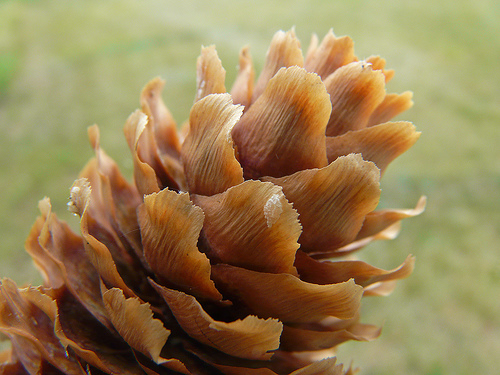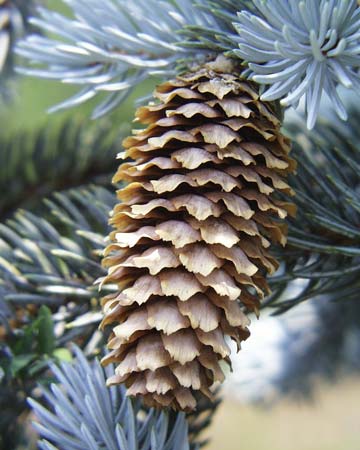How Does It Reproduce?
Blue spruce are monoecious
meaning they have both male and fema le cones present on the same
tree. They undergo an
alternation of generations with a dominant sporophyte generation.
Every two to three years full crops of cones are yielded.
Male cones are
reddish purple and ripen to yellowish-brown.
They are found spread all over the tree.
Female cones are seed-bearing cones called strobilus, which
are pale green and 6-11 cm in length.
They can produce up to 450 seeds and are found on the top
10-25 percent of the tree.
le cones present on the same
tree. They undergo an
alternation of generations with a dominant sporophyte generation.
Every two to three years full crops of cones are yielded.
Male cones are
reddish purple and ripen to yellowish-brown.
They are found spread all over the tree.
Female cones are seed-bearing cones called strobilus, which
are pale green and 6-11 cm in length.
They can produce up to 450 seeds and are found on the top
10-25 percent of the tree.
Seed production doesn’t begin until they are
about 20 years old with optimum seed-bearing cones between the ages
of 50 years and 150 years.
The seeds shed in September and continue shedding all winter.
Seeds germinate in spring or early summer.
Natur al reproduction is sparse; possibly because the seeds
lightweight prevents it from coming into contact with mineral soil,
which, with an abundance of water and the right shade ratio is
optimum for natural germination.
al reproduction is sparse; possibly because the seeds
lightweight prevents it from coming into contact with mineral soil,
which, with an abundance of water and the right shade ratio is
optimum for natural germination.
Before they are able to germinate seeds must be fertilized. To do this, microsporangium in male cones produce hundreds of thousands grains of pollen through meiosis. This pollen gets blown away in the wind and when it lands in an ovule next to female gametophyte fertilization can occur. After fertilization a diploid cell grows into a zygote and develops into an embryo. This embryo then develops into a seed, which eventually may fall to the ground and if the conditions are right it will grow into a new plant.
Let's find out how it plays with others. Check out interactions with other species.